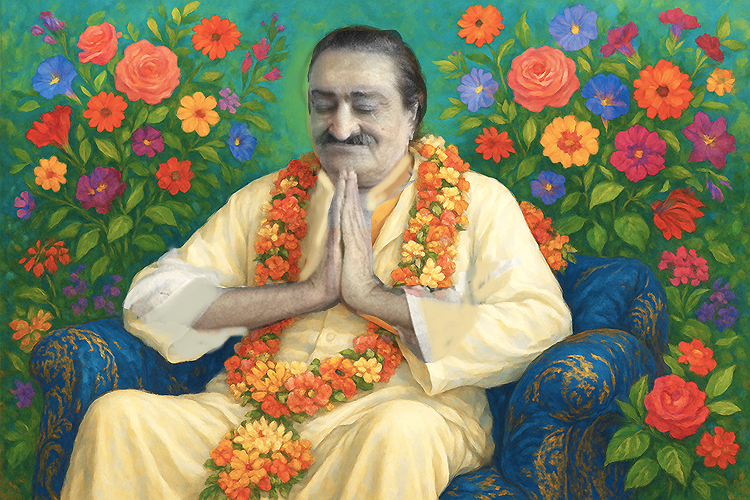God Descends in Human form Avatar Advents in India Age after age, when righteousness declines and His lovers yearn for Him, God descends among men in human form. As the Avatar, He comes to restore the balance of creation and guide His lovers. The five Perfect Masters unite their authority and bring down the Avatar to serve all creation. He often takes birth in the sacred land of India, the ancient home of His lovers, where hearts filled with longing await His coming. He is the Trinity of supreme divinity. Brahma the Creator, Vishnu the Preserver, and Shiva the Destroyer. Through the Avatar, the divine law of dharma is renewed, and the world regains its love for God. "Age after age, when humanity suffers in the clutches of ignorance and cries out for help, I come as the Avatar. Taking human form, I awaken mankind to the realization of its true Self, and lead those who are ready to the Truth." He has revealed Himself as Zoroaster, Rama, Krishna, Buddha, Jesus, Muhammad, and Meher Baba, and at times in lesser incarnations, not fully manifest. As pearls upon a single thread of eternity, the descents of the Avatar shine through the ages, each one reflecting a different radiance of the same infinite Truth. Mastery in Servitude -AVATAR MEHER BABA - India, the sacred land of the Avatar. Through the ages, its very soul has whispered to seekers, offering refuge to those on the inner path. This website is about India and its' avataric visits. AVATARS IN INDIA . Story of Meher Baba STORY MEHER BABA
| ||||||||||
---------------------------------------------- This website is dedicated to Avatar Meher Baba. Articles and website designed and edited by elenagh@live.com. Elena lives in Puerto Rico but has traveled extensively in Northern India since 1975, until 2017. The India of my heart. I received all that Baba showed me of the beautiful spiritual India. I can't keep looking for something that barely exists anymore..... Elenas India stories: PERSONAL STORIES |
